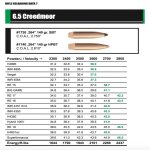I use groups of three of each load (like the guys above). Each group of three, I colour the bullet with markers, purchased from Dollar Store. Then on paper, I make up a chart: with the load, colour code, and a space to write the speed (you are chronying these, aren't you?).
I don't fire a group at a time. I fire one from red, one from blue, one from green, one from black, one from violet, one uncoloured, then go back to red, etc. I shoot at targets I made that are four 3" x 3" grids on the sheet, one colour per grid, with the centre squares having bold X through them. Since my scope is dialled in, I won't stray too far from the X... and anything I do stray, will be likely the load's fault.
Why colour them? When they strike paper, the colour leaves a ring. Easy to tell which shot was which, in case you have a flyer that interferes with another target (or if you're shooting out a couple hundred yards, you can shoot all of these onto one target, and you'll see which group better in relation to others.) AS mentioned, 100 yards, you don't want too many shots on each target, or you won't see anything.
After shooting, I'll pull the targets. I might see a decent grouping on red, better on blue, nice on green, horrible black, not bad violet, "meh" uncoloured. So apparently the green load is the one to use for that rifle. Any good grouping is called a "node", and as you go up in pressure, you could find a couple nodes before you hit max.
The crony is there to ensure your speed does not exceed the max speed listed on the max load recipe. That's NOT an accurate way to tell you're over pressure, because you're not using the same rifle that the recipe used, but it's a good safety net - as you approach the max, start paying more attention to comparing cases with the ones on the lower-end loads.
For target shooting, I go with the best grouping. If there are two good ones, I'll take the lowest (less recoil, less wear on barrel, cheaper on powder), and if I were get back into hunting, I'd take the highest load node.










































































